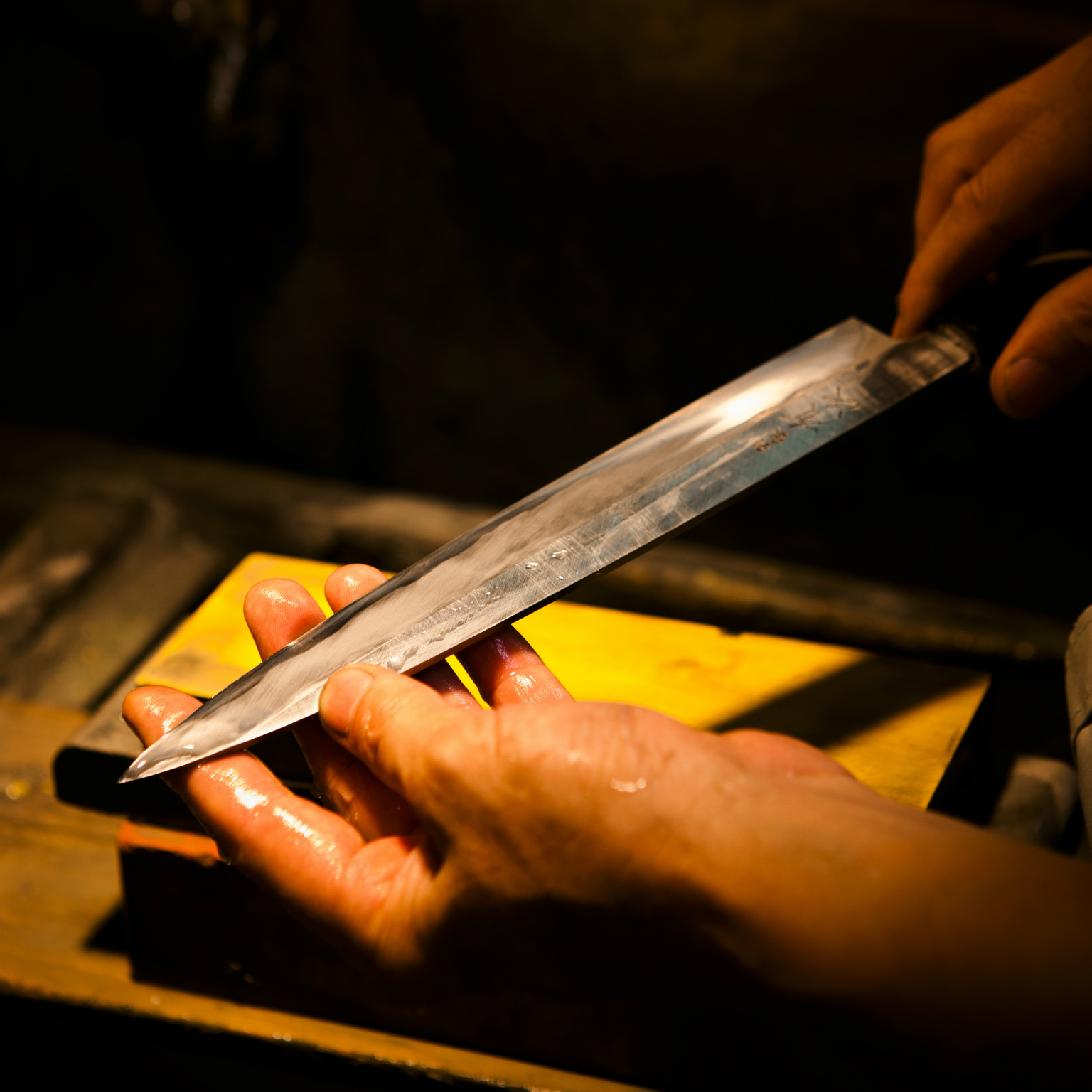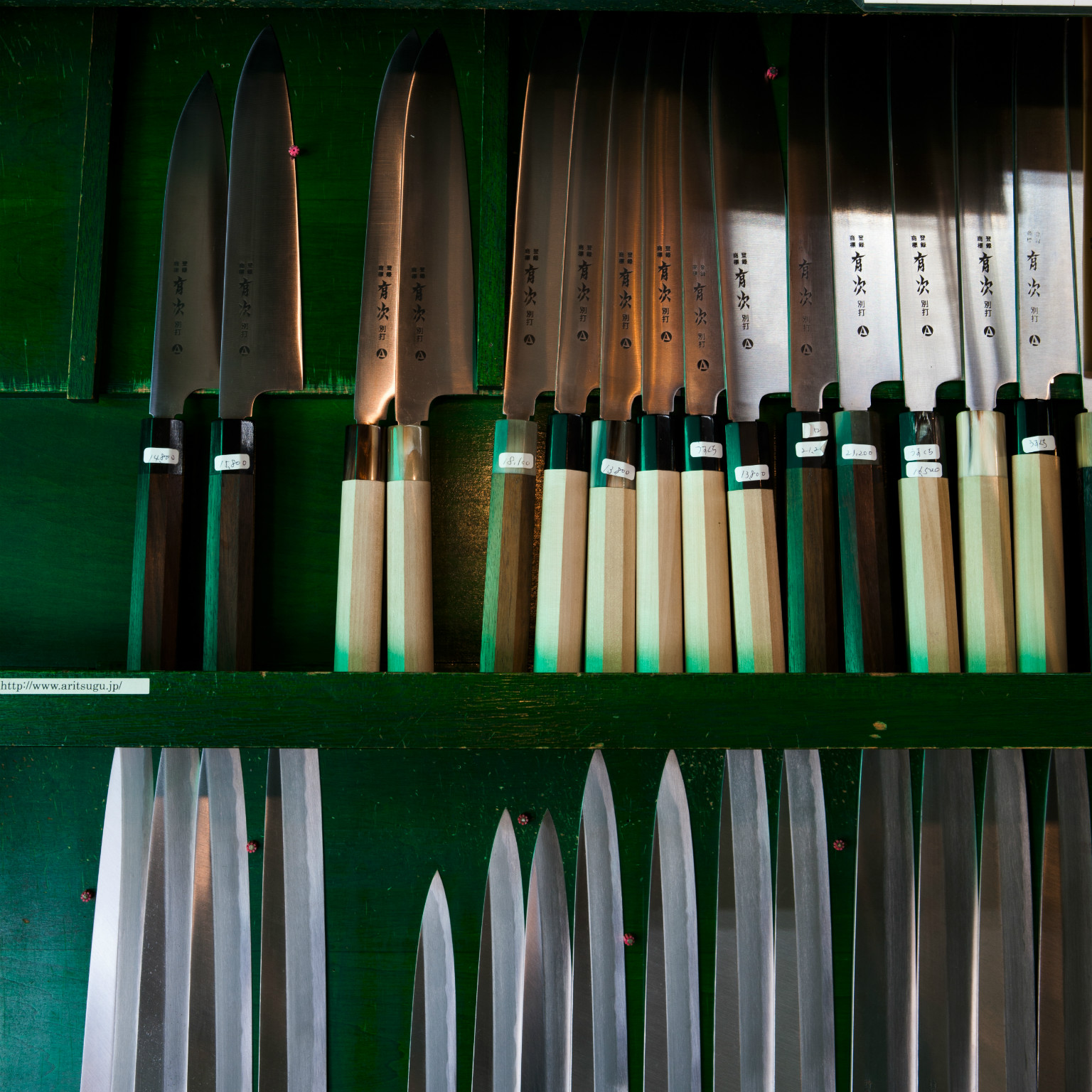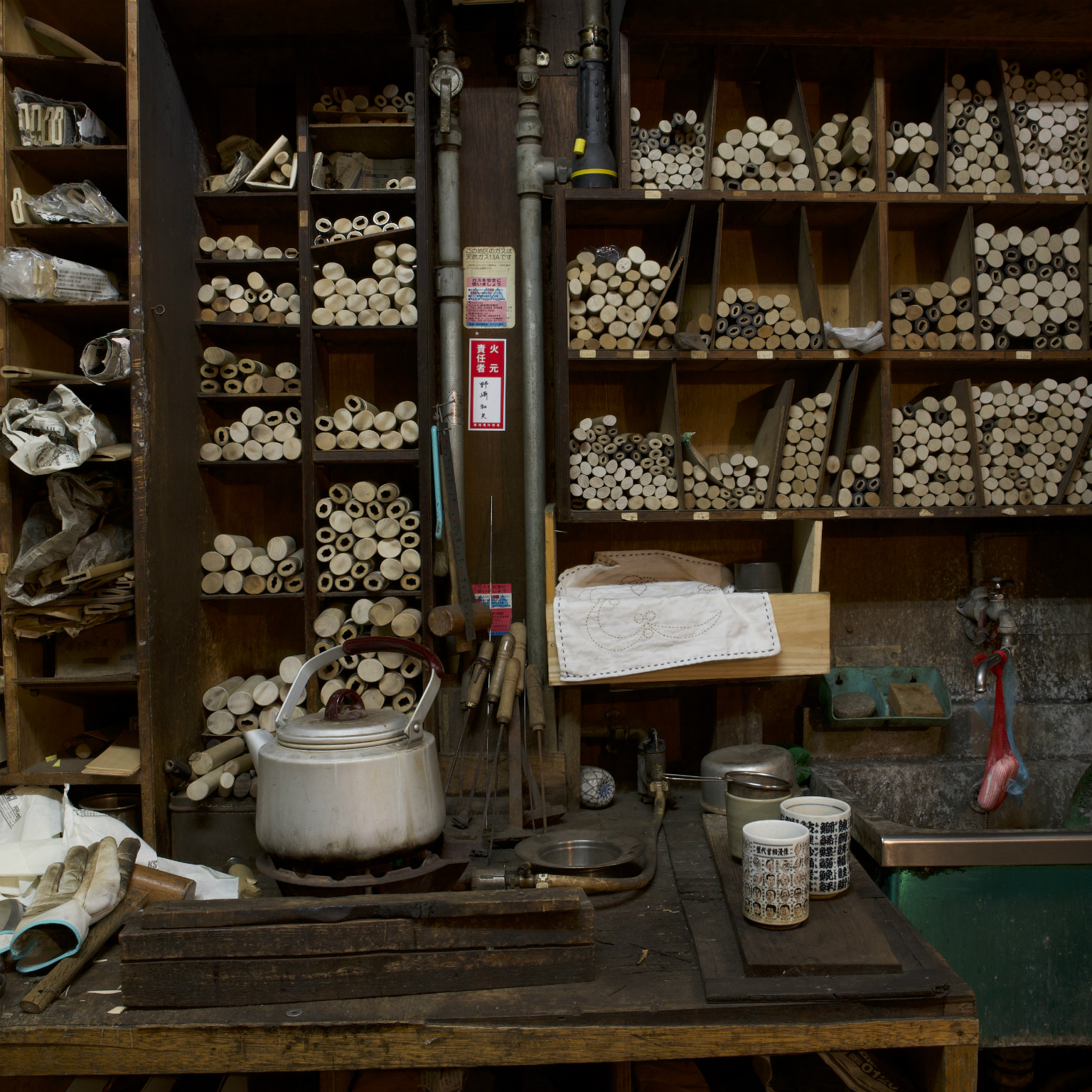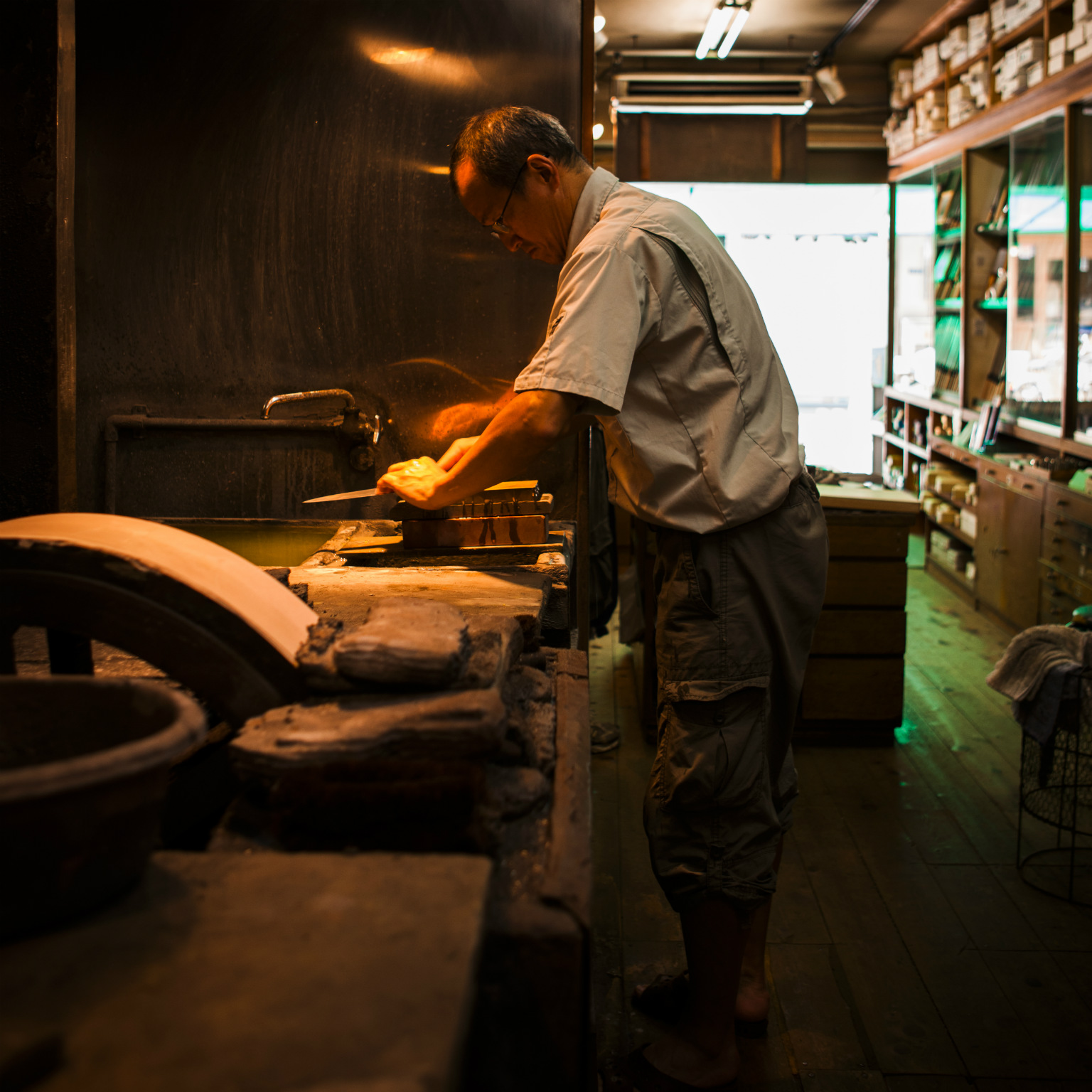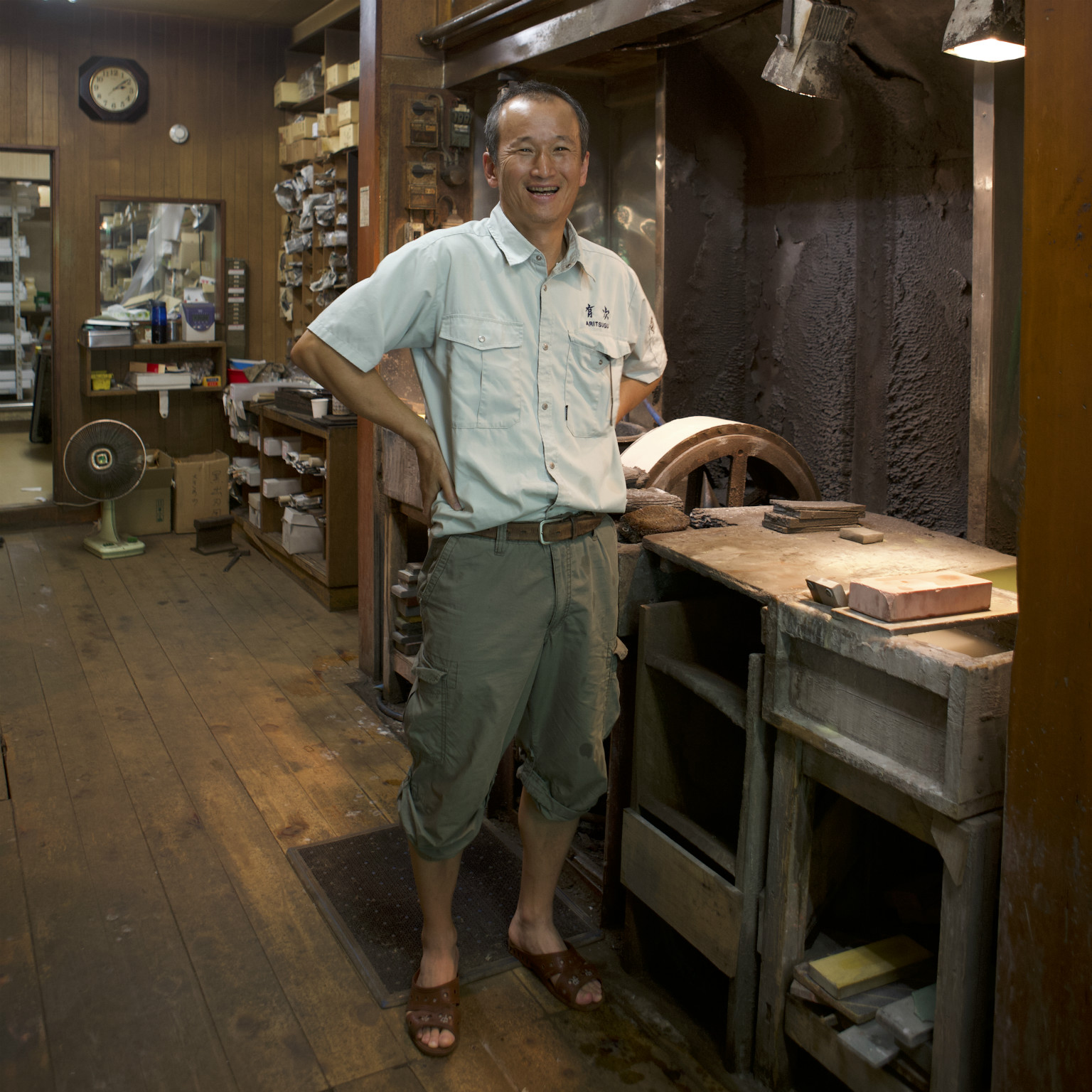“I appreciate the value of having the right tool for the right job.”
Kazuo Nozaki
Bladesmith
Aritsugu
Kazuo Nozaki is proud that chefs from New York to Stockholm flock to his unassuming shop at the former Tsukiji fish market to purchase high-quality Japanese knives for their kitchens. But famous customers aren’t the reason he starts work at 4am each day.
Aritsugu knife shop has been supplying blades to Tokyo fishmongers for more than 90 years. Its main customers are the wholesalers who prepare the early morning tuna, octopus, scallops, and other seafood for Tokyo’s sushi counters and izakaya tables. Starting work long before sunrise, they rely on the shop to sharpen and repair the tools of their trade. Only when this job is done will Nozaki open his shop to walk-in customers, no matter how famous they might be.
Tokyo Aritsugu began life in 1919 when, struggling to keep their brood of sons employed, the owners of the famous Kyoto store (est. 1560) dispatched two of their number to Tokyo. They set up shop in the Nihonbashi fish market, later moving to Tsukiji after the Great Kanto Earthquake of 1923.
Although today both the business and its owner are unrelated to the Kyoto shop, Nozaki’s history with the Tokyo store is long. He came to work at Artisugu to support himself while studying at a Tokyo college. But he put aside his plans for a career in machinery, instead ‘graduating’ to become a master of knives.
The child of a fishing family from Kyushu’s Saga Prefecture, Nozaki recalls how, as a boy, he cut soft lead to make sinkers for fishing lines. The only blade he could find to do this was his mother’s kitchen knife.
“It was impossible,” he recalls, laughing. “These days, I appreciate the value of having the right tool for the right job.”
And so do his customers. The range of knives on display at Aritsugu is staggering. There are knives fashioned specifically for meat, vegetables, noodles and fish; different knives for different fish; and even sets of three or four to prepare just one single species. No self-respecting chef would use the same knife designed to cut off a fish’s head to slice its belly in to sashimi.
Nozaki explains that long, narrow ‘willow’ blades for sashimi are popular, as are pointed gyutou – literally ‘beef knives’ – although they can be used for almost anything. Meanwhile the multi-purpose santoku knives, which are rounder at the top and a little wider, always sell out fast. Hand-forged but non-specific in duty, they’re high in both quality and maintenance.
Sakai, the traditional sword-making district in Osaka where the knives are made, is a place Nozaki must travel to frequently. There, each blade starts as a dark, dull rod of steel. Heated, hammered and cooled repeatedly for days, it eventually becomes a sharp, shiny instrument of strength and precision. It’s the same technique swordsmiths once used to arm samurai warriors.
For casual cooks, alloy and stainless steel knives are more affordable and easier to maintain, although they lack the artisanal commitment of owning a forged blade. By contrast, a traditional knife receives a final sharpening in the shop when purchased. After this it must be cared for indefinitely by its new owner: dried carefully after use, stored appropriately to avoid rust, and sharpened frequently to maintain its precision cut.
“Learning how to do that properly takes years of trial and error,” says Nozaki. And he has the scars on his hands to prove it.
TIPS & RESERVATION INFO
Despite its early opening time, Aritsugu remains open until 3pm, so visiting doesn’t require a dawn start. Its location is in the ‘outer market’ area that surrounds the former Tsukiji fish market and has always been open to the general public – and just like the rest of Tsukiji, it’s closed on most (but not all) Wednesdays.
ACCESS DETAILS
4-13-6 Tsukiji, Chuo-kuDIRECTIONS
Aritsugu
中央区築地4-13-6
電話: 03-3541-6890



